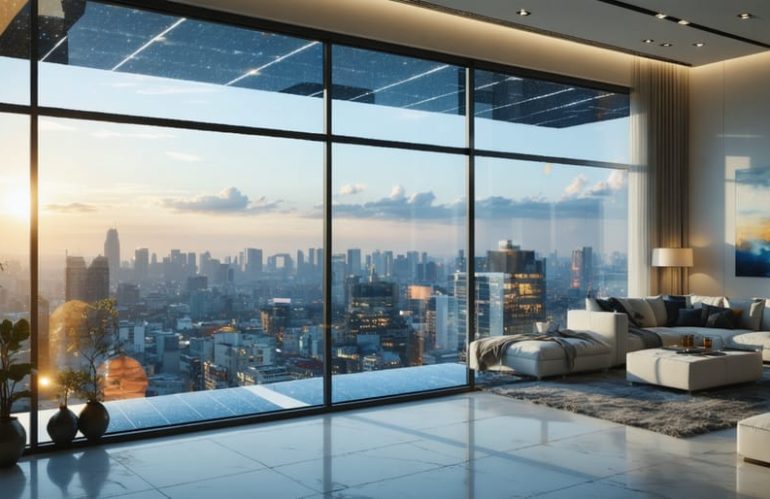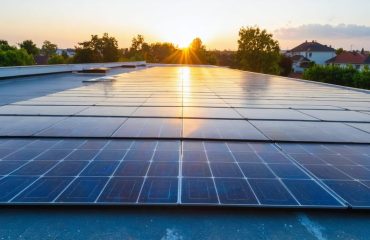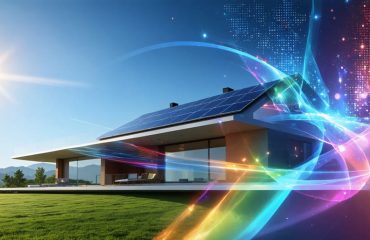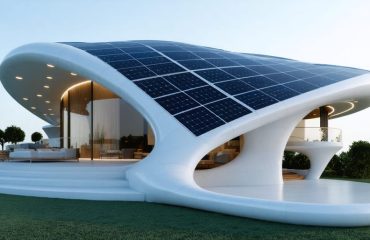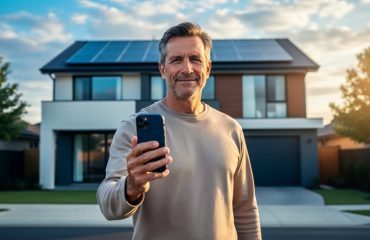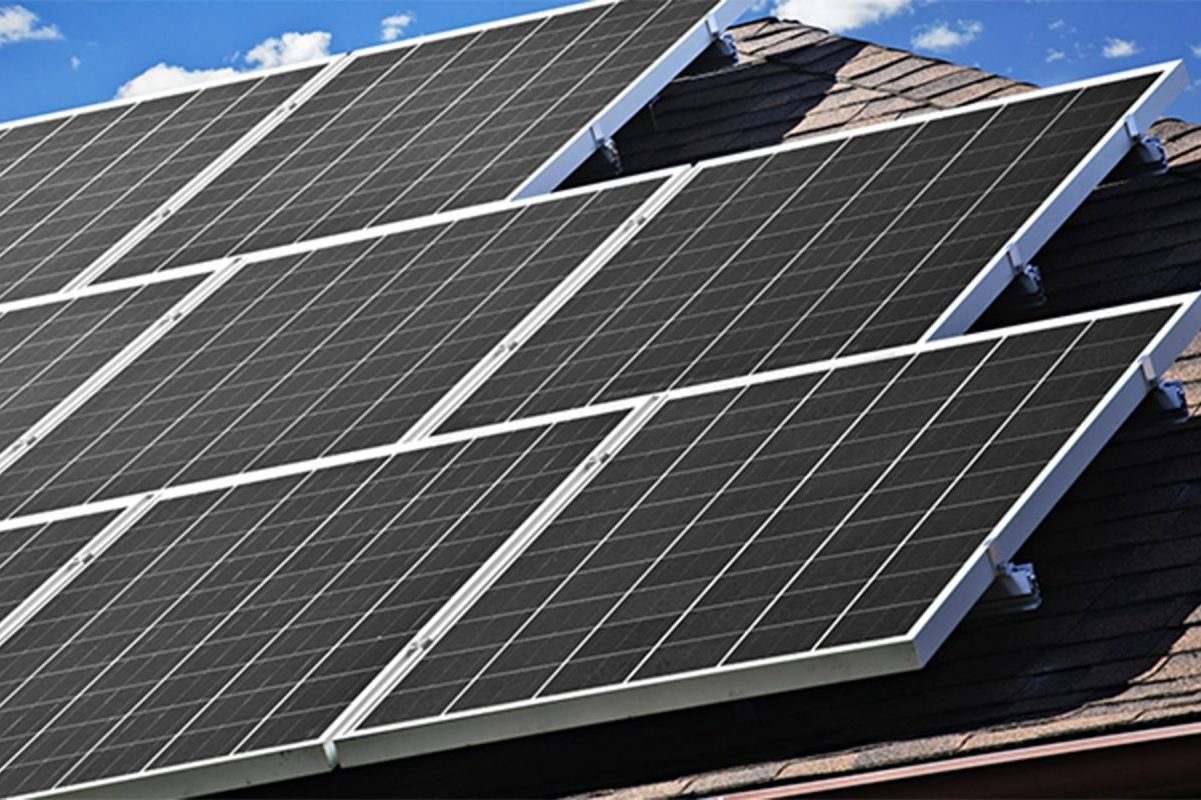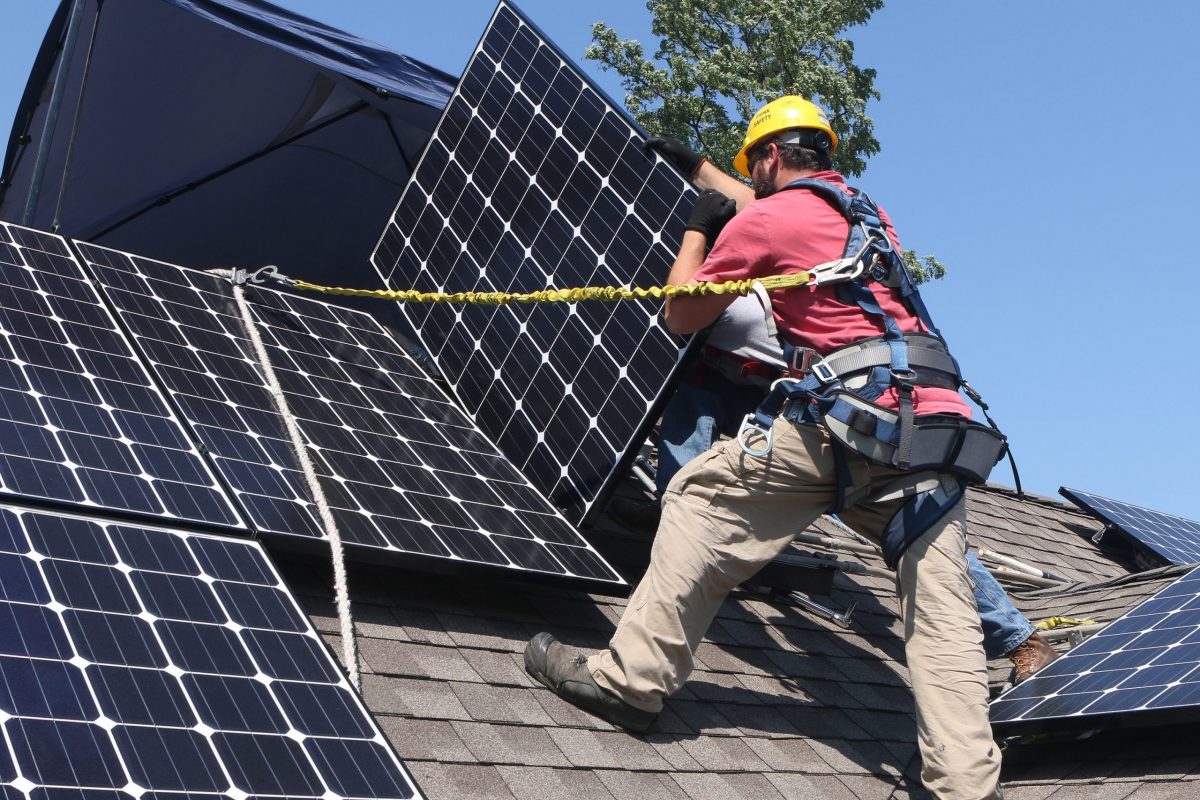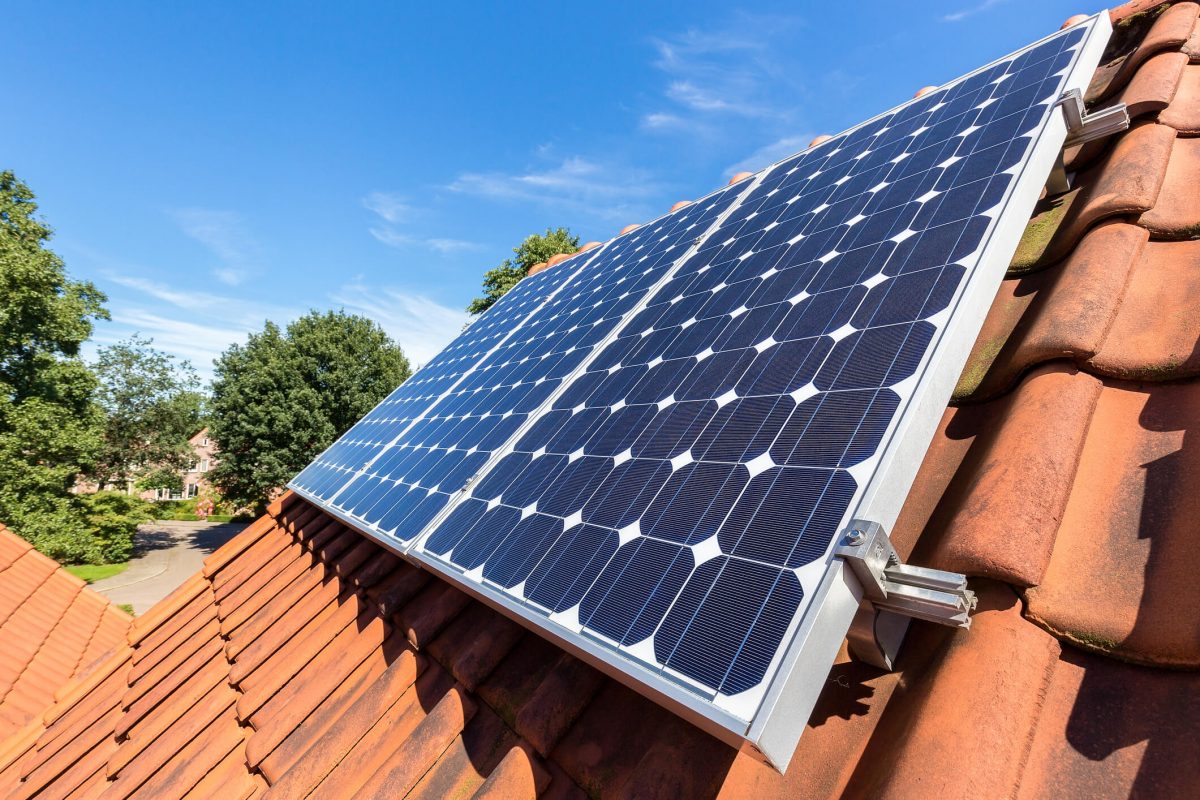Transform your living space into a solar-powered sanctuary without traditional rooftop installation. Recent solar technology advancements have made window-mounted solar panels an increasingly viable option for urban homeowners and apartment dwellers. These innovative solutions capture sunlight through your existing windows, converting otherwise wasted energy into usable electricity while maintaining your home’s aesthetic appeal.
Imagine powering your devices using the same windows that brighten your living space. While not as efficient as traditional roof-mounted systems, window-based solar solutions offer a unique compromise between energy generation and practical constraints of city living. Whether you’re renting, facing strict HOA regulations, or simply seeking an unobtrusive way to embrace renewable energy, window-mounted solar technology presents an accessible entry point into sustainable living.
This guide explores the reality of installing solar panels behind windows, helping you understand the potential benefits, limitations, and practical considerations for your home.
How Bifacial Solar Panels Transform Window Space
The Two-Sided Advantage
Bifacial solar panels represent a significant advancement in solar technology, offering a unique advantage by capturing light from both their front and rear surfaces. Unlike traditional panels, these innovative units can harness direct sunlight from the front while simultaneously collecting reflected and ambient light from behind. When placed behind windows, bifacial panels can make the most of both incoming sunlight and light reflected from interior surfaces like walls and floors.
This two-sided capability typically increases energy production by 5-30% compared to traditional single-sided panels, depending on the installation setup and environmental conditions. The panels work particularly well in bright rooms with light-colored walls and surfaces that naturally bounce light back toward the panel’s rear side. Even on cloudy days, bifacial panels continue to generate power from diffused light entering from multiple angles.
The dual-sided design also makes these panels ideal for vertical installations behind windows, as they can capture morning and evening light more effectively than conventional panels. This feature is especially beneficial for urban dwellers with limited roof access but ample window space.
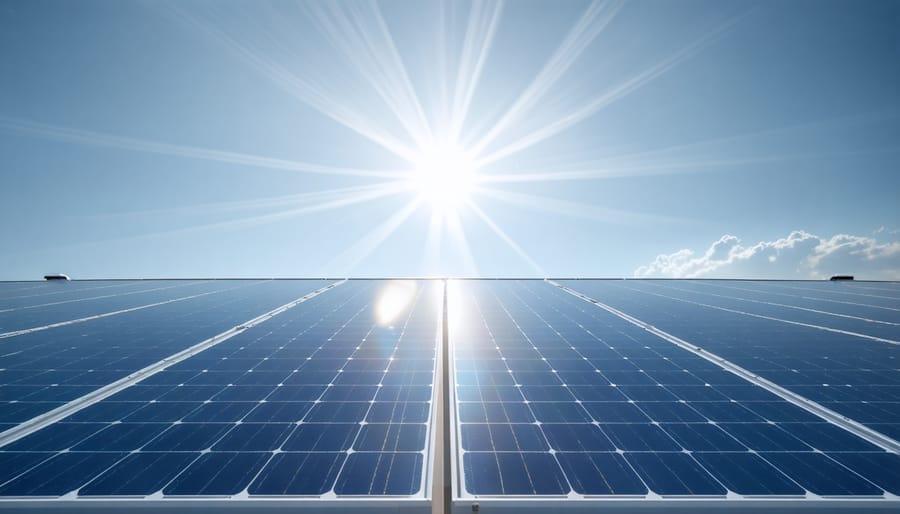
Window Installation Benefits
Installing bifacial solar panels behind windows offers several compelling advantages for homeowners seeking flexible solar solutions. One of the most significant benefits is the efficient use of existing space – there’s no need for additional mounting structures or dedicated installation areas. These panels seamlessly integrate with your home’s architecture, preserving your property’s aesthetic appeal while generating clean energy.
Window installation also provides dual functionality: the panels can generate power while acting as a natural shade, helping to reduce indoor temperatures and potentially lowering cooling costs during summer months. This setup is particularly advantageous for apartment dwellers or homeowners with limited roof access, offering a practical way to embrace solar power without structural modifications.
The discrete nature of behind-window installations means you can maintain your home’s original appearance while still benefiting from solar technology. This approach is especially valuable in areas with strict homeowners’ association guidelines or historic district regulations that might otherwise restrict traditional solar panel installations.
Additionally, window-mounted panels can be easily accessed for maintenance and cleaning, making upkeep more convenient compared to roof-mounted systems.
Real-World Performance and Expectations
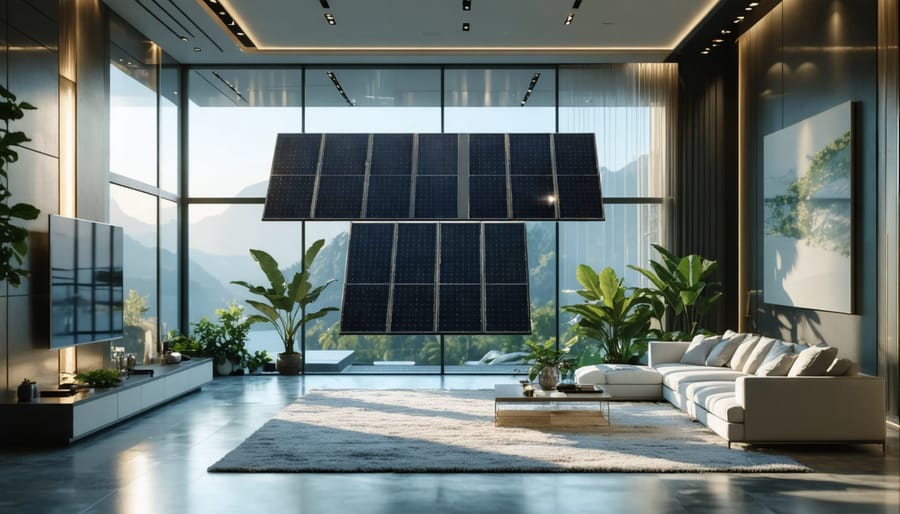
Energy Production Factors
Several key factors influence how effectively solar panels perform behind windows. Window type plays a crucial role, with low-E and tinted windows reducing energy production by 20-40%. Clear, single-pane windows allow the most sunlight through, making them ideal for this setup. Double-pane windows, while better for insulation, can slightly decrease panel efficiency.
Window orientation significantly impacts energy generation. South-facing windows in the Northern Hemisphere receive the most direct sunlight throughout the day, potentially producing up to 30% more energy than east or west-facing windows. The optimal angle is typically between 30-45 degrees relative to the sun.
Seasonal changes also affect performance dramatically. Summer months naturally yield higher energy production due to longer daylight hours and more direct sunlight. Winter brings shorter days and more oblique sun angles, potentially reducing energy output by 40-60%. Weather conditions like cloudy days and rain further impact production.
Time of day influences efficiency as well. Peak production occurs during midday when sunlight is most direct. Morning and evening hours see reduced output due to indirect light and longer paths through window glass. Temperature can also affect performance, with excessive heat potentially reducing efficiency by 10-25%, though being behind glass can sometimes help moderate temperature extremes.
Understanding these factors helps set realistic expectations and optimize panel placement for maximum energy generation.
Optimal Setup Tips
To maximize energy collection from your window-mounted bifacial solar panels, proper positioning is crucial. Start by selecting south-facing windows in the Northern Hemisphere (or north-facing windows in the Southern Hemisphere) to ensure maximum sun exposure throughout the day. The ideal angle for your panels should be between 30-45 degrees relative to the window surface.
Keep your windows clean both inside and out, as dirt and grime can significantly reduce light transmission. Consider using low-iron, high-transparency glass in your windows to minimize light absorption. If possible, install reflective materials like white paint or aluminum foil on the wall opposite your panels to bounce more light back to the bifacial surface.
Maintain at least 4-6 inches of space between the panel and window to allow for proper airflow and prevent heat buildup. Using mounting brackets with adjustable angles lets you optimize positioning seasonally. During summer months, a slightly steeper angle helps prevent overheating while maintaining efficiency.
For multi-panel setups, avoid overlapping shadows by spacing panels appropriately. Smart placement of furniture and decor can also help by not blocking light paths. Consider using light-colored curtains or blinds that can reflect additional light onto your panels when partially closed.
Monitor panel performance through different seasons and adjust accordingly. Remember that even small optimizations can lead to meaningful improvements in energy generation over time.
Installation and Maintenance Considerations
Installation Requirements
Before installing solar panels behind your windows, several key requirements need to be met for optimal performance. First, ensure your windows face the optimal direction – south-facing windows in the Northern Hemisphere receive the most sunlight throughout the day. The windows should be clear, double-paned glass without any low-E coating or tinting that could reduce light transmission.
You’ll need adequate space between the window and the panel for proper ventilation, typically 4-6 inches. This gap helps prevent heat buildup and maintains panel efficiency. The mounting system should be sturdy and secure, capable of supporting the panel’s weight while allowing for easy maintenance access.
Your window sill must be strong enough to bear the additional weight of the mounting system and panel. A structural assessment may be necessary, especially for larger installations. The window area should be free from external obstructions like trees, buildings, or awnings that could cast shadows.
Consider the room’s interior layout as well. The panel setup will occupy window space, so ensure this won’t significantly impact natural lighting or ventilation needs. You’ll also need a nearby electrical connection point and space for essential components like inverters and wiring.
For safety and compliance, check local building codes and homeowners’ association regulations regarding window-mounted solar installations. Some areas may require specific permits or have restrictions on visible solar equipment.
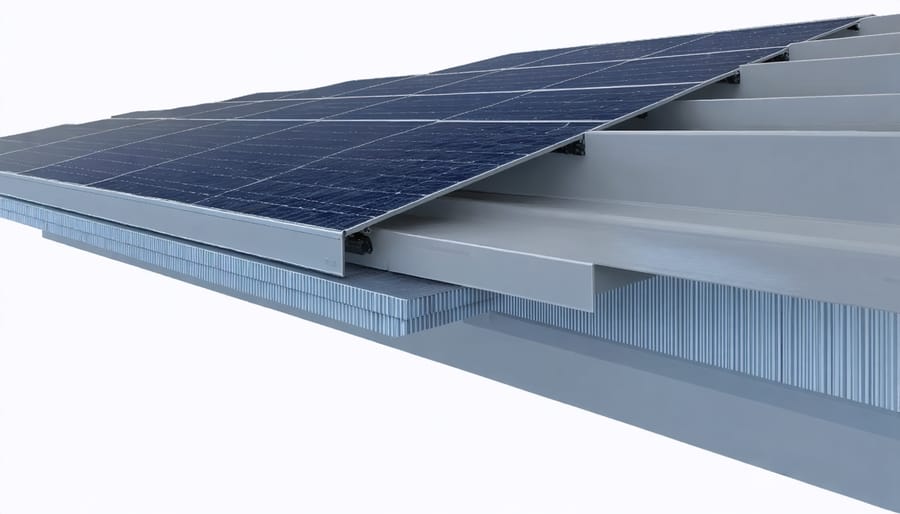
Long-term Care and Performance
To maintain optimal performance of solar panels installed behind windows, regular cleaning of both the window and panel surfaces is essential. Use a soft, lint-free cloth with mild soap and water every 2-3 months to remove dust, dirt, and fingerprints that can reduce efficiency. Avoid abrasive cleaners or rough materials that might scratch either surface.
Monitor the gap between the window and solar panel to ensure proper ventilation, as this space helps prevent heat buildup that could affect performance. If you notice condensation forming between the panel and window, adjust the spacing or consider additional ventilation solutions.
Check the mounting brackets or adhesive systems quarterly to ensure they remain secure and maintain optimal panel positioning. Season changes can affect mounting systems, so pay special attention during extreme weather transitions.
Keep trees and surrounding vegetation trimmed to prevent additional shadowing on your windows. While some shade is inevitable with indoor installation, minimizing external obstacles helps maximize energy production.
Track your system’s performance through its monitoring app or device to quickly identify any unusual drops in energy production. This helps you address issues before they become significant problems. Most behind-window solar installations can maintain 80-90% of their initial efficiency for 15-20 years with proper care and maintenance.
Consider professional inspection every 2-3 years to ensure all components are functioning correctly and to receive expert recommendations for optimization based on your specific setup.
As we’ve explored throughout this article, installing bifacial solar panels behind windows represents an innovative approach to harnessing solar energy, especially for those who can’t install traditional rooftop systems. While these installations may not match the efficiency of conventional outdoor panels, they offer a practical solution for urban dwellers, renters, and homeowners seeking creative ways to embrace renewable energy.
The advantages are clear: no structural modifications, flexible placement options, and the ability to generate clean energy while maintaining your home’s aesthetic appeal. As affordable solar technologies continue to evolve, bifacial panels are becoming increasingly efficient and cost-effective, making them a viable option for sustainable living.
Remember that success with window-mounted bifacial panels depends on careful consideration of your specific circumstances. Factor in your window orientation, local climate, and available sunlight when planning your installation. While the energy output may be lower than traditional installations, every kilowatt-hour generated represents a step toward energy independence and environmental responsibility.
Consider starting small with a single panel setup to test the effectiveness in your space. As you become more comfortable with the technology and see the benefits firsthand, you can expand your system gradually. Whether your goal is reducing energy bills, minimizing your carbon footprint, or simply exploring innovative sustainable solutions, bifacial panels behind windows offer an accessible entry point into solar power generation.
Take the next step toward energy independence by consulting with solar professionals who can assess your space and recommend the most effective setup for your needs. The future of urban solar power is bright, and it might just start right behind your windows.

